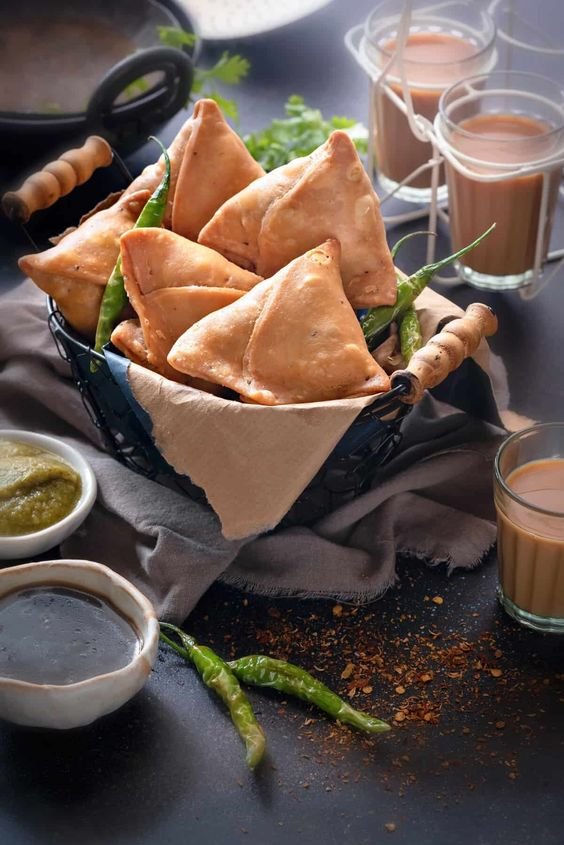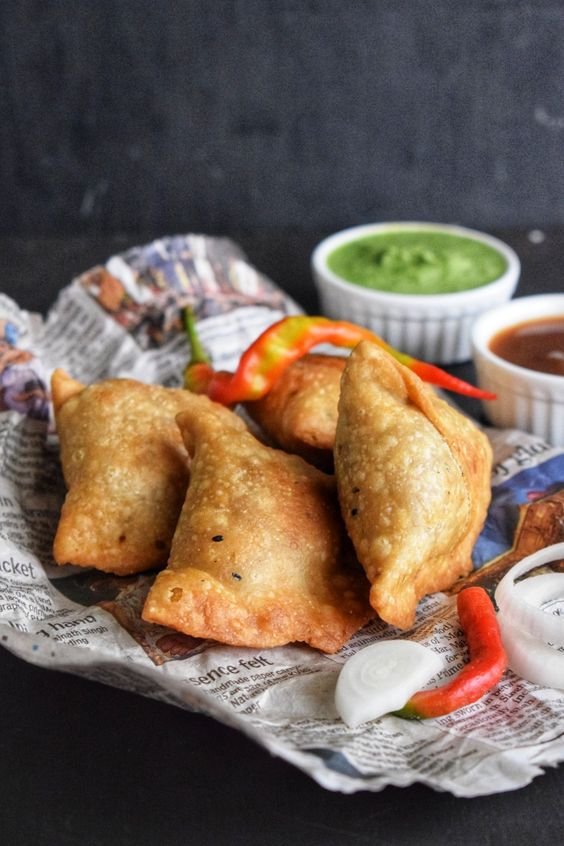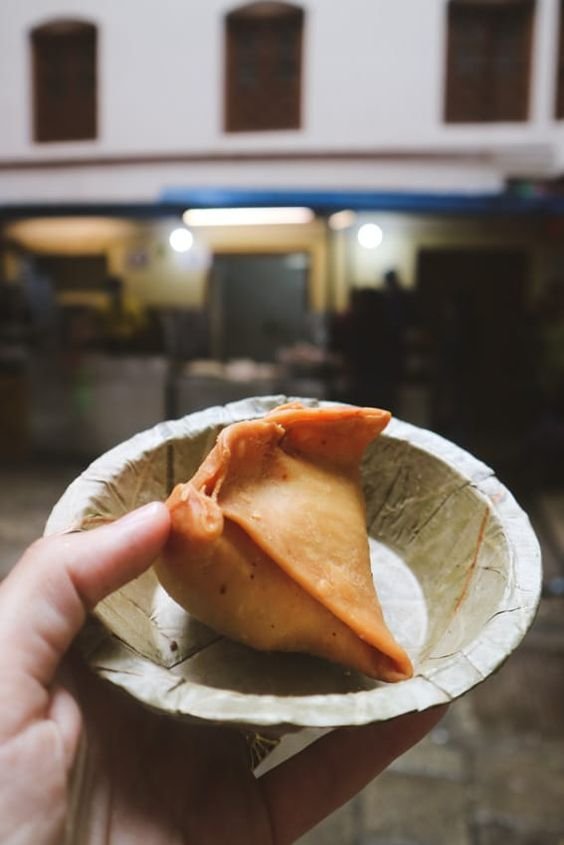Exploring the Rich History and Enigmatic Origins of the Samosa: A Deep-Fried Delicacy

Samosa, the golden and crispy triangular pastry filled with a delectable mix of savory ingredients, has become an iconic snack enjoyed by millions around the world. Its tantalizing aroma and irresistible taste have made it a popular street food and a staple in the culinary landscape of many countries. In this comprehensive blog, we embark on a fascinating journey to uncover the intricate history and enigmatic origins of the samosa.
Origins of the Samosa:
The roots of the samosa can be traced back to the Middle East, where a similar dish known as “sambusak” existed as early as the 9th century. The sambusak was a deep-fried pastry filled with minced meat, vegetables, and spices. Its popularity grew, and it eventually made its way to different regions, including Central Asia and the Indian subcontinent.

Arrival in Central Asia and the Indian Subcontinent:
The sambusak’s journey to Central Asia and the Indian subcontinent can be attributed to the invasions and migrations of various cultures and communities. With the Persian and Turkic tribes’ conquests in the region, the sambusak found its way into these new territories, where it underwent significant adaptations to suit local tastes and available ingredients.
Culinary Transformations in the Indian Subcontinent:
Once the sambusak reached the Indian subcontinent, it underwent a remarkable culinary transformation. The dish adapted to the diverse regional palates, leading to the birth of what we now know as the samosa. Over time, the samosa became an integral part of Indian, Pakistani, and Bangladeshi cuisines.

Etymology and Naming:
The name “samosa” is believed to have originated from the Persian word “sanbosag” or “sambosa,” which refers to a triangular pastry. As the dish made its way to the Indian subcontinent, it acquired its own name, which varied across different regions. In India, it is commonly referred to as “samosa,” while in Pakistan and Bangladesh, it is known as “samosa” or “singara.”
Cultural Significance:
Beyond its culinary appeal, the samosa holds cultural significance in the Indian subcontinent. It is associated with various festivities, street food culture, and tea-time snacks. During Ramadan, samosas are often a part of the traditional iftar (meal to break the fast). In addition, the samosa has become an emblem of Indian cuisine and a symbol of communal sharing, enjoyed by people of all ages and backgrounds.

Regional Variations:
The samosa’s culinary evolution has given rise to diverse regional variations across the Indian subcontinent. Some notable examples include:
1. Indian Samosa: The traditional Indian samosa typically features a flaky and crispy crust filled with a spiced potato and pea mixture. Aromatic spices such as cumin, coriander, and garam masala add depth and flavor to the filling. In addition to the classic potato filling, regional variations include the Punjabi samosa, which often includes meat fillings such as minced lamb or chicken. Rajasthan, known for its vibrant cuisine, offers spicy and tangy samosas that tantalize the taste buds.
2. Pakistani Samosa: Pakistani samosas are usually larger in size compared to their Indian counterparts. They often contain a savory mixture of minced meat, onions, and a blend of aromatic spices. These samosas are deep-fried to perfection, resulting in a crispy exterior and a flavorful interior.
3. Bangladeshi Singara: In Bangladesh, a smaller version of the samosa called “singara” is popular. Singaras are often filled with potatoes
or a combination of vegetables, including cauliflower, carrots, and peas. They are known for their spicy and tangy flavor profile, complemented by a crispy outer crust.

Global Popularity and Adaptations:
The global popularity of the samosa has transcended borders, spreading its influence far and wide. It has become a beloved snack in various countries, including Afghanistan, Iran, the Middle East, Southeast Asia, East Africa, and even the Caribbean. Each region has added its own unique twist to the samosa, incorporating local ingredients and flavors. For example, Afghan samosas often feature a spiced meat filling, while Middle Eastern variants may include ingredients like feta cheese or spinach.

Samosa in Modern Culinary Scenes:
With the advent of globalization, the samosa has made its way into international food scenes. It is now commonly found in restaurants, cafes, and even food trucks worldwide. Chefs and culinary enthusiasts have also experimented with fusion variations, incorporating diverse ingredients such as cheese, seafood, and even sweet fillings. The samosa has become a versatile canvas for creativity while retaining its inherent charm and flavors.

Conclusion:
The samosa, with its tantalizing taste and intriguing history, continues to captivate food lovers around the world. From its origins in the Middle East to its culinary transformations in the Indian subcontinent, the samosa exemplifies the fusion of cultures and culinary traditions. Whether enjoyed as a street food snack or as part of a festive celebration, the samosa holds a special place in the hearts and palates of people worldwide. So, the next time you savor a piping hot samosa, take a moment to appreciate the centuries-old journey that brought this delectable delight to your plate.


